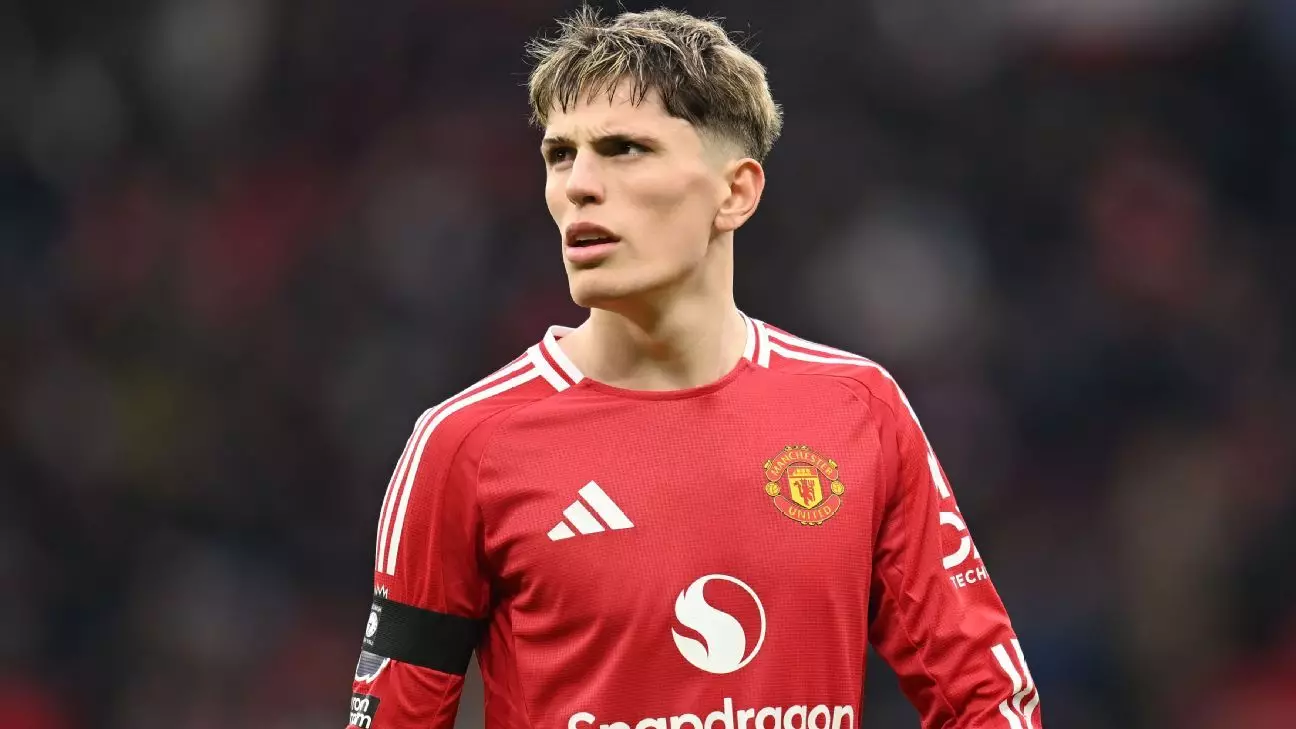In an ever-evolving landscape of football transfers, Napoli’s sporting director, Gioanni Manna, has highlighted the complexities that clubs face in securing new talent. Recent discussions around Alejandro Garnacho’s potential move from Manchester United exposed the financial chasm that can exist between player desires and a club’s budgetary constraints. At just 20 years old, Garnacho has already made a name for himself, but Napoli discovered that his wage demands were prohibitively high, effectively shutting the door on a prospective deal. This scenario reflects a broader trend in football, where young talents often command substantial financial packages, complicating potential transfers for clubs with less financial muscle.
Napoli’s need for fresh attacking power became pressing after the departure of Khvicha Kvaratskhelia to Paris Saint-Germain for a considerable sum of €60 million. Losing a standout player necessitated a strategic approach to recruitment, and Garnacho was an appealing target amidst the club’s search for a suitable replacement. Manna emphasized that consideration for Garnacho predates Kvaratskhelia’s exit, indicating a well-thought-out strategy aimed at reinforcing the squad even before a crucial player left. However, financial disparities revealed the limitations of Napoli’s approach, forcing them to reassess their options within the market.
Manna’s comments shed light on the negotiation processes that characterize modern football transfers. The sporting director articulated that even with an agreeable transfer fee, Garnacho’s reluctance to compromise on his salary significantly hampered the potential move. His insight into Garnacho’s situation reflects an important aspect of player recruitment; while managerial and financial agreements are vital, a player’s personal expectations often pose formidable barriers. Manna’s refusal to meet these demands underscores a commitment to maintaining internal equity within the squad—critical for team morale and cohesion.
Opening up the conversation further, Manna shared details about a failed chase for Borussia Dortmund striker Karim Adeyemi, reinforcing the challenges of attracting top-tier talents to Napoli. Although they had a preliminary agreement in place with Dortmund, Adeyemi’s hesitance to join highlighted another facet of player psychology. This situation reflects the importance of player motivation and fit within a club’s framework—without a genuine desire from the player to join, negotiations can stall, regardless of financial incentives.
Despite these setbacks, Napoli remains proactive with their recent loan acquisition of Switzerland striker Noah Okafor from AC Milan, showcasing their ability to adapt to the market’s dynamics and identify alternative targets. As leaders in Serie A, they are not only looking to fill gaps left by departing players but are also strategic about the long-term vision of building a balanced squad. Napoli’s ability to navigate and negotiate within these complex financial waters will be crucial as they continue their campaign and pursue further success both domestically and in European competitions.
Napoli’s recent transfer dealings illustrate the intricate dance of negotiations in football—a blend of financial prudence, player aspirations, and the ever-changing dynamics of team composition.

